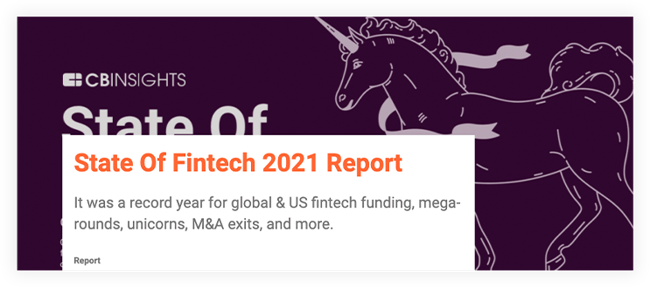“If you write a blog post a week, you’ll have 52 more webpages by the end of the year that Google could show in search results.”
That’s one of the first things I heard about content marketing, and it’s a great representation of the prevailing ideas about how to succeed in the early days. In short: create a bunch of content and you’ll reap the rewards. The more content you create, the better.
Most marketers understood that the quality of the content was important, but the primary goal for many was to produce a large quantity of content – and it worked.
Before we knew it, it seemed that almost every marketing team was embracing content marketing. After the COVID-19 pandemic shut down events and thrust the world into virtual reality, we saw companies increase their focus on content even more.
With the sheer amount of content out there now, it’s clear that what worked in the early days of content marketing won’t generate the same results today. Simply creating content, no matter how much of it you make, no longer differentiates a company. It’s quality content that counts.
Blog posts that only regurgitate information that’s already on the web just aren’t going to perform as well as they used to – especially for brands earlier on in their content marketing journey. The bar has been raised. To be successful today, you have to learn how to jump higher. Here are some ways to do just that:
1. Share a contrarian opinion on a topic
Is there a general consensus in your industry that you disagree with? Or maybe you’ve drawn a different conclusion about something than most others? Those opinions are perfect sources of content inspiration.
To find these ideas, start by identifying the commonly-accepted “truths” in your industry. Then consider whether any of them run counter to your experiences, reasoning, or beliefs. The more passionate you feel about dispelling one of these so-called truths, the more likely that it’s a great topic for you to create content about.
Example:
For auto dealership service departments, offering discounted oil changes is about as popular as those oil change reminder stickers they leave on your windshield. Those discounts are a widely accepted marketing tactic that nearly everyone in the industry assumes works well. DriveSure, a Simple Strat client that offers customer retention solutions to dealerships, disagrees. We used this difference of opinion to help them write a blog post that’s sure to catch the attention of every dealership service manager that sees it:

2. Making the theoretical tangible
The world is full of thoughts, ideas, and concepts that are difficult to translate into action. If you can be the one that helps someone truly grasp a theory and act on it, they’ll often find a ton of value in your content.
Example:
Paul Roetzer founded the Marketing Artificial Intelligence Institute to do this very thing. The homepage of their website reads:
“Artificial intelligence is forecasted to have trillions of dollars in annual impact, yet many marketers struggle to understand what AI is and how to apply it to their marketing programs. That’s where we come in.”
Paul noticed an opportunity to make the mostly theoretical conversation about AI actionable, and marketers have been eating up the institute’s content through podcast episodes, blog posts, courses, live events, and more ever since. Take a look at this landing page for their “Ultimate Beginner’s Guide to AI in Marketing” to see how they position their content.

3. Explaining why something is the way that it is
Have you noticed a pattern or change in your industry? Do you have a good understanding of the reasons for that pattern or change? Share it! Humans love to understand the ‘why’ behind something – and often have a lot respect for the people with a knack for uncovering it.
Example:
The business newsletter Morning Brew has made a name for itself by providing business and financial news in a way that’s easy to understand and enjoyable to read. But one of their flagship newsletter’s best traits? Their ability to quickly explain the “why” behind the news.
For example, each newsletter includes a “Markets” section with the typical market movement stats from the previous day. But under the stats, they explain the key reasons for what’s happening in the markets – and they tend to do it in just a hundred words or so.

4. New data to support, challenge, or show changes to a topic
People love to share their opinions and observations on the internet as if they’re facts – regardless of whether there’s any data to support it. So if you add actual data to the conversation, you can quickly garner more attention.
Not only does it give you more credibility as an expert on the topic, this tactic is also a great way to get backlinks and shares. When other people also want to support their points with data, but without all the work of actually gathering and analyzing it, they’ll simply refer to yours.
Example:
CB Insights is one of the best companies at leveraging data in their content , which makes sense for a brand offering a “tech market intelligence platform.” The cornerstones of their content are research reports, but they also maintain a very active blog and email newsletter. In fact, their content is so packed with novel value that they’re one of the few brands that can get away with putting most of it behind a paywall.

Bonus Example:
Don’t worry, you don’t have to be a large organization with data and research as a core part of your DNA to leverage this tactic. Inside Sales Solutions is a Simple Strat client that offers outsourced sales development services to B2B tech companies. We recently helped them use data about their conversion rates in an article that shows sales leaders how to outperform industry benchmarks. There’s a whole lot of content out there about conversion rates, but very little of it is backed with real and up-to-date statistics that challenge the widely-accepted norms.
5. Coin a term for a new or nameless concept, trend, or solution
Many of the words that dominate the business news of today – from metaverse to blockchain to growth hacking – haven’t existed for very long. Somebody came up with or identified each of those terms as a succinct way to talk about something more complex. If you can do that in your industry, it instantly gives you long-lasting credibility.
This can be done for brand new concepts and ideas that you or your organization created, or it can be done with already-existing concepts that don’t currently have a name. If you’re bad at thinking up new words, consider borrowing a term commonly used in another field that could apply.
Example:
Hiten Shah, founder of Crazy Egg, KISSmetrics, and Quick Sprout, is well known for his thoughts on startups and growth. There are many reasons for his notoriety, but one of the things he’s best known for is his involvement in creating and popularizing the term growth hacker. Today it’s almost impossible to attend a startup event without hearing someone talk about growth hacking and around 35,000 people have “growth hacker” listed somewhere on their LinkedIn profile. Here’s an article he wrote about how he and a couple friends first identified the term.
Bonus Example:
Local governments are slowly but surely implementing new technologies to connect and engage with the public. And with the challenges presented by the COVID-19 pandemic, the pace has accelerated. 3Di Systems, a provider of public sector software solutions, predicts this trend will culminate in online portals where citizens and businesses can do nearly any interaction with city governments through their computers or mobile devices.
3Di has the software platform to support this and is well positioned to lead the market in helping cities establish it. The only issue? “An online portal where citizens and businesses can do nearly any interaction with city governments through their computers or mobile devices” doesn’t exactly roll off the tongue. So instead, 3Di has coined the term Virtual City Hall and is working with Simple Strat to help them popularize the concept through their content.

Bonus: Small things that spruce up any content
The five strategies we’ve identified for creating more interesting, higher quality content are effective. But they’re also harder to execute and generally require buy-in from a variety of people in your organization.
Whenever you can, strive to create content that uses these or other frameworks for truly adding to the conversation or creating a new one entirely. But if there are times when you have to create content that’s similar to what already exists, here’s a short list of things you can include in any piece that’ll help it stand out and offer more value to the reader, listener, or viewer:
- Your (or your organization’s) point of view on the topic
- Thoughts, ideas, or opinions from subject-matter experts on your team
- Thoughts, ideas, or opinions from one or more industry experts or influencers
- Thoughts, ideas, or opinions from your customers
- Real-life examples (like I’ve done throughout this post) – just try to avoid using the same examples everyone else uses
- Interesting analysis, conclusions, or compilations of publicly-available data (this takes you one step further than simply reciting an outdated statistic that’s already in every other piece of content on your topic)
- Excellent formatting – make your content easier to consume, more pleasant to look at, and find ways to convey ideas through different means (such as creative use of graphics in a blog post)
Whether it’s with these simple tactics or the broader angles above, every organization has the capability to create high quality content that stands out in the crowd. The work is not easy. But there’s no doubt that the table stakes of content quality are going up. The only question is whether you’ll rise to meet the challenge, delivering more value to both your organization and your target audience.





More Stories
Credit Card Debt Settlement Rip-Offs!
Acceptance of Credit Cards Without a Merchant Account
Maximize Your Medisoft! (Unknown and Underused Functions of Medisoft)